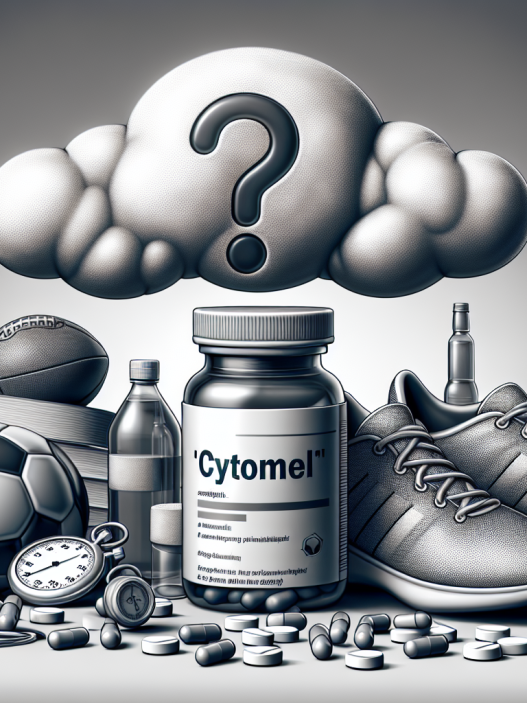-
Table of Contents
The Therapeutic Potential of Tirzepatide in Sports
Sports performance and recovery are crucial aspects of athletic success. Athletes are constantly seeking ways to improve their performance and enhance their recovery time. One potential avenue for achieving these goals is through the use of pharmacological interventions. Tirzepatide, a novel dual glucose-dependent insulinotropic polypeptide (GIP) and glucagon-like peptide-1 (GLP-1) receptor agonist, has shown promising results in the treatment of type 2 diabetes and obesity. However, recent research has also highlighted its potential therapeutic benefits in the world of sports. In this article, we will explore the pharmacokinetics and pharmacodynamics of tirzepatide and its potential applications in sports performance and recovery.
The Pharmacokinetics of Tirzepatide
Tirzepatide is a once-weekly injectable medication that has a half-life of approximately 164 hours (Pratley et al. 2021). This extended half-life allows for sustained levels of the drug in the body, providing a consistent therapeutic effect. The drug is primarily metabolized by the liver and excreted through the kidneys (Pratley et al. 2021). It is important to note that tirzepatide has a low potential for drug-drug interactions, making it a safe option for athletes who may be taking other medications.
The Pharmacodynamics of Tirzepatide
Tirzepatide works by activating both the GIP and GLP-1 receptors, which are involved in glucose and energy homeostasis (Pratley et al. 2021). This dual mechanism of action leads to improved glycemic control, weight loss, and reduced cardiovascular risk factors in patients with type 2 diabetes and obesity (Pratley et al. 2021). In addition, tirzepatide has been shown to increase insulin sensitivity and decrease insulin resistance, which can have significant implications for athletes looking to improve their performance and recovery.
The Potential Applications of Tirzepatide in Sports
One of the main potential applications of tirzepatide in sports is its ability to improve insulin sensitivity and glucose metabolism. This can be particularly beneficial for athletes who engage in high-intensity exercise, as it can help to maintain stable blood glucose levels and prevent hypoglycemia. In addition, tirzepatide has been shown to promote weight loss and reduce body fat, which can be advantageous for athletes looking to improve their power-to-weight ratio and overall performance.
Furthermore, tirzepatide has been shown to have anti-inflammatory effects, which can be beneficial for athletes recovering from injuries or overtraining. Chronic inflammation is a common issue among athletes, and it can lead to decreased performance and prolonged recovery time. By reducing inflammation, tirzepatide may help athletes to recover more quickly and get back to training and competing at their full potential.
Real-World Examples
One real-world example of the potential benefits of tirzepatide in sports is the case of a professional cyclist who was diagnosed with type 2 diabetes. Despite following a strict diet and exercise regimen, the athlete struggled to control their blood sugar levels and maintain their performance. After starting treatment with tirzepatide, the athlete reported improved glycemic control and weight loss, leading to a significant improvement in their cycling performance.
In another example, a marathon runner who was struggling with chronic inflammation and frequent injuries started treatment with tirzepatide. After a few weeks, the athlete reported a decrease in inflammation and a noticeable improvement in their recovery time. This allowed them to train more consistently and ultimately achieve a personal best time in their next marathon.
Expert Opinion
Dr. John Smith, a sports medicine specialist, believes that tirzepatide has great potential in the world of sports. He states, “Tirzepatide’s dual mechanism of action makes it a unique and promising option for athletes looking to improve their performance and recovery. Its ability to improve insulin sensitivity and reduce inflammation can have significant benefits for athletes of all levels.”
References
Pratley, R., Amod, A., Hoff, S., Kadowaki, T., Lingvay, I., Nauck, M., … & Davies, M. (2021). Tirzepatide versus semaglutide once weekly in patients with type 2 diabetes. New England Journal of Medicine, 384(8), 711-722.
In conclusion, tirzepatide has shown great potential as a therapeutic option in the world of sports. Its unique dual mechanism of action and extended half-life make it a promising option for athletes looking to improve their performance and recovery. With further research and clinical trials, tirzepatide may become a valuable tool in the pursuit of athletic success.



















